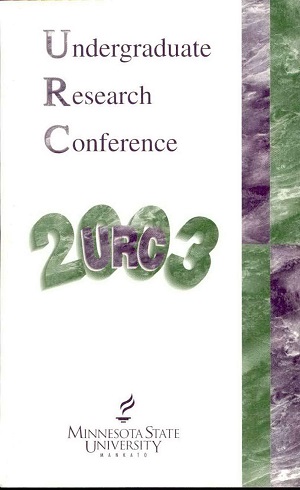Oxygen Abundances in the Rings of Polar-Ring Galaxies
Location
CSU
Student's Major
Physics and Astronomy
Student's College
Science, Engineering and Technology
Mentor's Name
Paul B. Eskridge
Mentor's Department
Physics and Astronomy
Mentor's College
Social and Behavioral Sciences
Description
Optical spectroscopy of regions of ionized gas (HII regions) surrounding young, hot stars tells us the density, temperature, and mixture of chemical elements in HII regions. As HE regions are relatively bright and their flux is concentrated, they offer us probes of the chemical abundances in the interstellar medium (ISM) of extemal galaxies. Polar-ring galaxies (PRCs) are systems in which the host galaxy possesses a ring of material (gas, dust, and stars), orbiting with a symmetry plane nearly perpendicular to that of the host galaxy disk. PRCs have two separate, perpendicular axes of rotation. From this, it is clear that PRGs are the products of merger events between two initial galaxies, but are observed in a state where two distinct kinematic and morphological structures are still apparent. PRGs offer the possibility of unique insights to the problems of galaxy interactions and evolution by giving us examples of clear post-merger systems in the nearby Universe, in which the components of the original galaxies are still physically separated. A crucial factor for understanding the formation and evolution of PRGs is information regarding the heavy element abundances of the ring material. We have obtained optical spectroscopy for HII regions in several PRGs. We present the results of our abundance analysis for some of these HII regions, and show spectra for objects still under analysis.
Oxygen Abundances in the Rings of Polar-Ring Galaxies
CSU
Optical spectroscopy of regions of ionized gas (HII regions) surrounding young, hot stars tells us the density, temperature, and mixture of chemical elements in HII regions. As HE regions are relatively bright and their flux is concentrated, they offer us probes of the chemical abundances in the interstellar medium (ISM) of extemal galaxies. Polar-ring galaxies (PRCs) are systems in which the host galaxy possesses a ring of material (gas, dust, and stars), orbiting with a symmetry plane nearly perpendicular to that of the host galaxy disk. PRCs have two separate, perpendicular axes of rotation. From this, it is clear that PRGs are the products of merger events between two initial galaxies, but are observed in a state where two distinct kinematic and morphological structures are still apparent. PRGs offer the possibility of unique insights to the problems of galaxy interactions and evolution by giving us examples of clear post-merger systems in the nearby Universe, in which the components of the original galaxies are still physically separated. A crucial factor for understanding the formation and evolution of PRGs is information regarding the heavy element abundances of the ring material. We have obtained optical spectroscopy for HII regions in several PRGs. We present the results of our abundance analysis for some of these HII regions, and show spectra for objects still under analysis.



